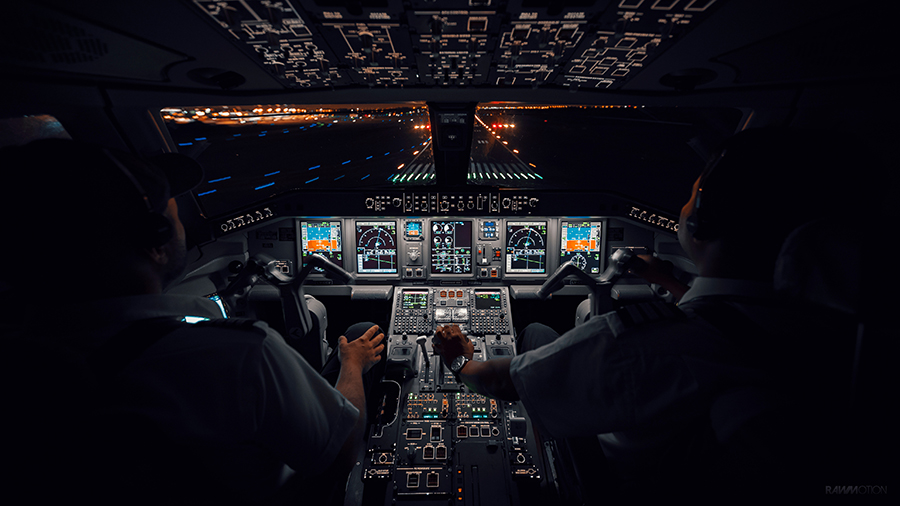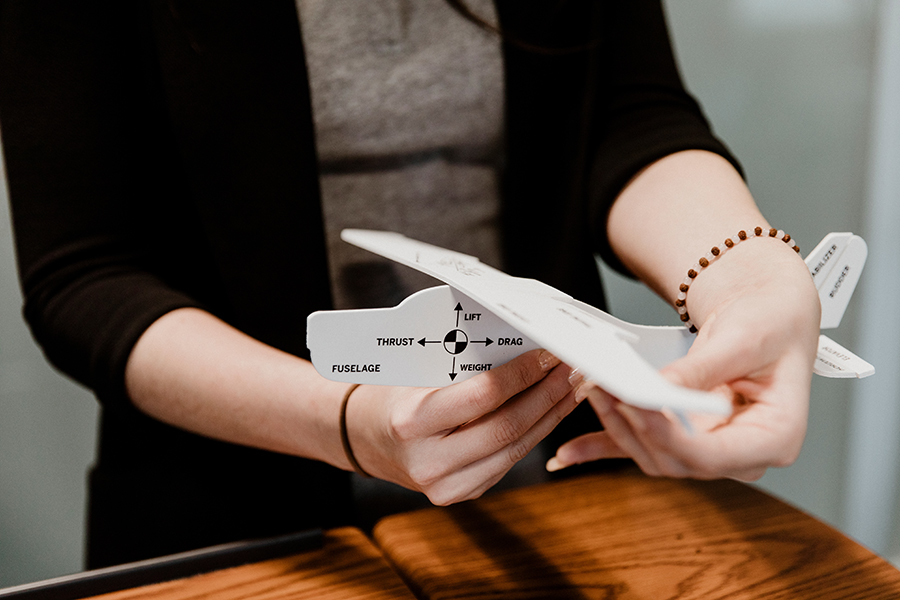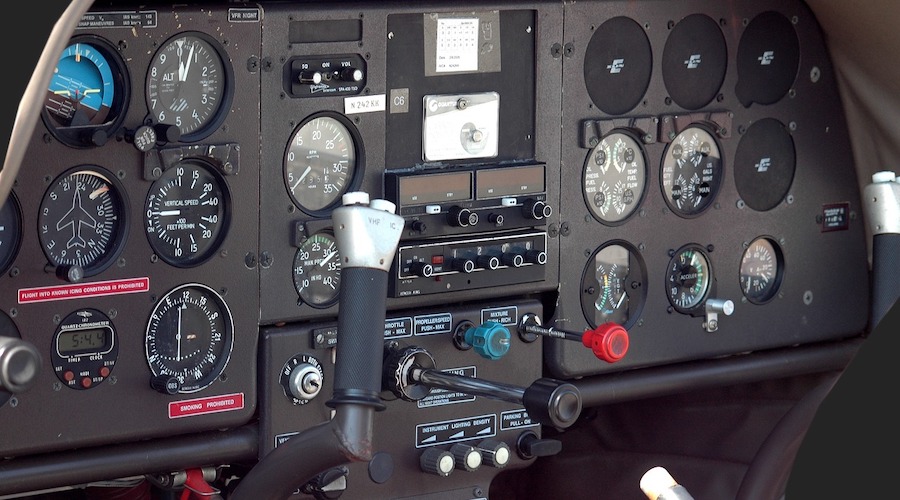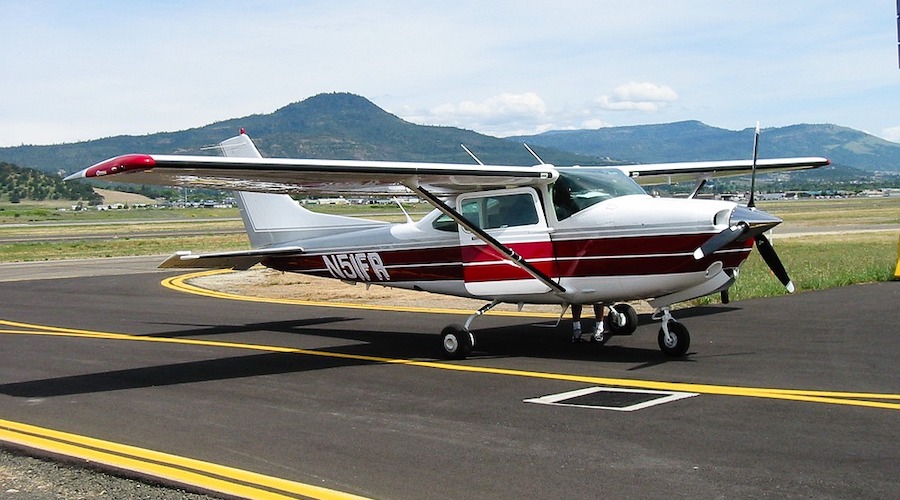-
Tips to Avoid Pilot Deviations
- Communicate Clearly with ATC
- Maintain Situational Awareness
- Plan Your Flight Before Departure
- Use a GPS
- Use an Autopilot
- Create a Buffer
- Avoid Complacency on the Ground
-
What Happens When You Cause a "Pilot Deviation"
-
The FAA Pilot Deviation Enforcement Process
- The Event
- The Investigation
- The Resolution (by the FSDO)
-
Pilot Deviation Consequences
- No Violation
- Administrative Action
- 709 Ride (Reexamination)
- Compliance Action (Compliance Program)
- Certificate Action
-
Appeal of a Certificate Suspension or Revocation
-
Should You Get a Lawyer After a Pilot Deviation?
-
Conclusion
A pilot deviation is an event where a pilot violates a regulation or instruction from Air Traffic Control (ATC), such as landing without clearance or deviating from an assigned altitude.
Pilot deviations are not an enjoyable experience for those involved, and it is best to avoid them altogether. In extreme cases, they may lead to accidents that cause injury.
This article will explain how to prevent pilot deviations and what to expect if you hear the dreaded “possible pilot deviation” from ATC.
Tips to Avoid Pilot Deviations
Communicate Clearly with ATC
The purpose of ATC is to keep the skies safe, and following their instructions will help ensure that you comply with aviation rules and regulations.
Ensure that you clearly understand any instructions received from ATC and clarify any confusion.
Don’t hesitate to ask questions if you are unsure of a command or instruction.
If you haven’t flown in a while or fly irregularly, try to keep your radio communication skills sharp by reviewing radio procedures and even practicing in a home flight simulator using online ATC services such as VATSIM.
Maintain Situational Awareness
Pilot deviations often occur when the crew loses situational awareness.
Maintaining a complete understanding of the aircraft’s position and altitude and what is likely to happen next will help you prevent any possible pilot deviations from occurring.
Stay alert but calm at all times – even during the cruise.
Plan Your Flight Before Departure
Before you depart, familiarize yourself with the route and airspace you will be flying in.
Becoming familiar with the airspace will help ensure that you know what is expected of you ahead of time and any special instructions or regulations relevant to the flight.
Planning and preparing for your flight becomes particularly relevant when flying Visual Flight Rules (VFR), where procedures can often become more complicated than standardized Instrument Flight Rules (IFR) procedures.
There will always be uncertainty during a flight; not every variable can be accounted for and factored into preparation. Despite the natural variability of a flight, preparing as far as possible will go a long way in preventing pilot deviations.
Use a GPS
Using a GPS can be a great way to increase situational awareness and avoid pilot deviations.
By providing the location, altitude, speed, and heading of the aircraft, a GPS can allow pilots to focus on more critical tasks while maintaining situational awareness.
GPS systems provide additional safety benefits, such as alerting pilots when approaching the borders of controlled airspace.
Some modern aviation GPS systems have traffic information built into the system, which can significantly increase situational awareness, particularly in uncontrolled airspace.
Use an Autopilot
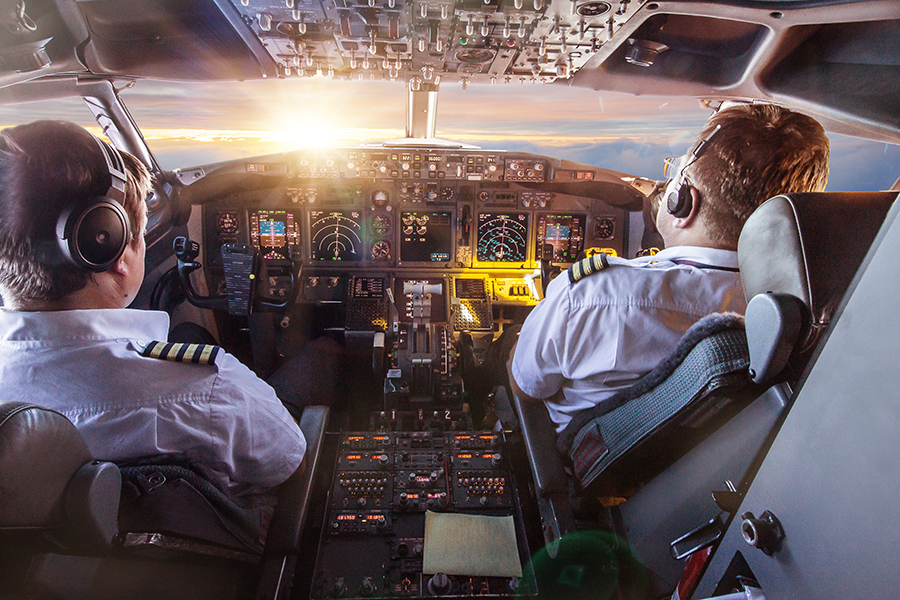
Using an autopilot to fly your aircraft can also prevent pilot deviations.
An autopilot will enable a pilot to focus on the overall flight rather than managing individual aircraft systems or control inputs. Using an autopilot can significantly increase situational awareness and prevent distractions that can cause pilot deviations.
Autopilots are especially useful when flying in Instrument Flight Rules (IFR), where maintaining altitude and heading can be critical.
The autopilot does present a slight double edge, however.
Mismanagement of automation can lead to pilot deviations when the autopilot is provided with incorrect instructions, which are not identified and corrected.
Take a pilot who accidentally sets an altitude of 9,300 feet, despite not being cleared above 9,000 feet. If the mistake is not recognized, the autopilot will blissfully pass through the 9,000 feet assigned altitude. The pilot, still monitoring the altitude, only realizes what has happened when it is too late.
And just like that, a pilot deviation occurred. Not because of a misunderstanding between the pilot and ATC, but rather a misunderstanding between the pilot and their aircraft’s automation.
Create a Buffer
Pilot deviations often occur due to a violation of some form of measurement: An altitude, a heading, or a geographic position (e.g., an airspace violation), to name a few.
Flying at the limit of a potential violation is a great way to inadvertently cause one.
Take a VFR flight along an airspace boundary for which clearance to enter has not been received. A pilot using a GPS may be flying closely along the edge of the uncleared airspace according to their GPS indication. On the Air Traffic Controller’s screen, however, the transponder data received from the aircraft places the aircraft inside the uncleared airspace, and, as such, a pilot deviation has occurred.
Who is to blame in this situation?
While the argument may sound pedantic, it is the pilot’s responsibility to ensure that they are not causing a pilot deviation through any form of measurement.
How can a pilot be expected to adhere to this responsibility? By creating sufficient buffers from pilot deviations where possible.
If the pilot is instructed to stay below a certain altitude, they must create an adequate buffer between the restricted altitude and their actual altitude. If a pilot intends to fly along the boundary of airspace that they have not been cleared to enter, they must ensure a sufficient distance between the airspace and the aircraft’s position.
There are endless examples of creating a sufficient buffer to avoid pilot deviations, but the concept is relatively simple: Don’t fly on the edge of a possible pilot deviation if you don’t have to.
Avoid Complacency on the Ground
Pilot deviations can just as easily occur on the ground as in the air.
Pilots must strive to maintain a sterile cockpit as soon as operations commence on the ground.
Unfamiliar airports, foreign accents, incorrect readbacks, and a whole host of other unique factors can lead to pilot deviations on the ground – often with more severe consequences than in the air.
What Happens When You Cause a “Pilot Deviation”
Causing a pilot deviation can be an embarrassing misunderstanding at best and criminal at worst.
No one wants to be on the receiving end of a pilot deviation incident. Understanding the process involved after a potential pilot deviation will allow you to be more understanding and helpful during the investigation and allow you to ultimately learn from the event or clear your name in a civilized manner.
Let’s remove the mystery surrounding the dreaded “possible pilot deviation.”
The FAA Pilot Deviation Enforcement Process
The FAA pilot deviation enforcement process consists of five phases:
- The Event
- The Investigation
- The Resolution (by the FSDO)
- The Enforcement
- The Appeal
Let’s have a look at each in detail.
The sections below are not legal advice. Verify the information below with your own research and get advice from a qualified attorney before proceeding.
The Event
The triggering event is the claimed deviation. The triggering event may not always be a deviation from an ATC instruction. It could be failing a ramp check or a video depicting an apparent violation.
The ATC term “possible pilot deviation” is the prelude to a possible investigation.
ATC will state “possible pilot deviation” and provide contact details (usually a cellphone number).
Depending on the event’s severity, the resulting phone call may conclude the process. In more severe cases, the call is merely a means of exchanging contact info, and the investigation will commence.
The Investigation
After the triggering event, an Aviation Safety Inspector (ASI) will create a file, examine reports, talk to witnesses, and typically contact the airman through an official Letter of Investigation, by phone, or by email.
All formal and informal contact must include a notice of the right not to respond and information on the FAA’s compliance program (explained later in this article).
The Resolution (by the FSDO)
A pilot deviation event can be resolved in five different ways:
- A finding of “No Violation”
- Administrative Action
- A “709 Ride” (Reexamination)
- Compliance Action (under the compliance program)
- Certificate Action
What are these, what do they entail, and when are they used? Let’s explore each one.
Pilot Deviation Consequences
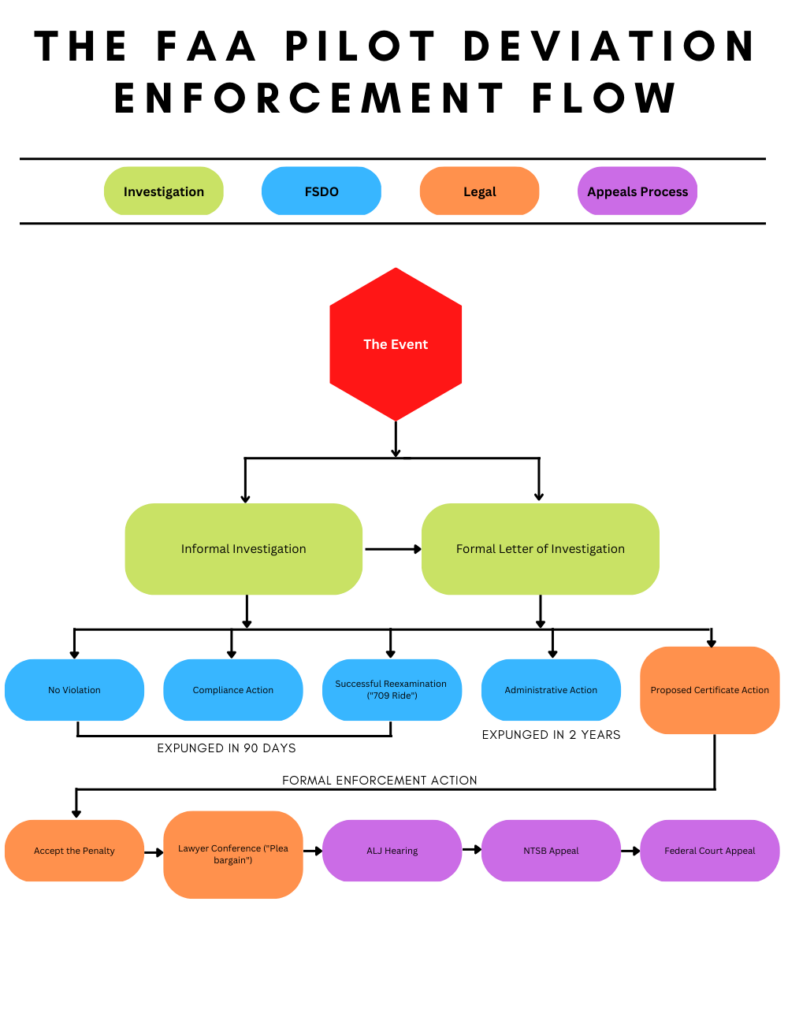
No Violation
If the investigation reveals no violation, the file is closed, and no corrective action is necessary.
False pilot deviation claims are not common, and those that are incorrect are generally not made with malicious intent.
Pilot deviation reports where no violation is found are expunged from your record in 90 days.
Administrative Action
There are two types of administrative action:
- Warning Notice
- Letter of Correction
These two forms of administrative action essentially say, “You’ve done something wrong; we have evidence to prove it, but we’re not going to take action. Make sure you don’t do it again.”
The Letter of Correction doesn’t just recognize the issue, like the Warning Notice, but also provides actions that need to be taken to rectify the situation.
Administrative actions are expunged from your record after two years.
709 Ride (Reexamination)
A 709 Ride, also known as a “reexamination,” derives its name from the FAA’s 49 U.S.C. §44709. 709 allows the FAA to “reexamine an airman holding a certificate” when evidence suggests a lack of competence on the part of the airman.
A 709 ride is often issued after clear-cut incidents such as the gear-up landing of a fully serviceable aircraft.
A 709 ride involves a check ride with a Designated Pilot Examiner (DPE).
If the checkride is passed successfully, the pilot deviation process is concluded, and the incident is expunged from the airman’s record after 90 days.
If the airman does not pass the checkride or refuses to take it, the FAA will move to revoke ratings or even certificates.
Compliance Action (Compliance Program)
A compliance action is the FAA’s primary method of dealing with unintentional pilot deviations that don’t result from gross negligence or fraud.
A compliance action comes from the FAA’s Compliance Program.
The FAA created the Compliance Program with the idea that regulatory compliance is more likely to be achieved by “an open and transparent safety information exchange” than the threat of punishment.
The ultimate goal of the compliance program is to reduce the number of pilot deviations by identifying and correcting their causes.
Similar to the Letter of Correction, the airman must acknowledge their mistake and take corrective actions, but the process and consequences are different.
The successful completion of the corrective actions (e.g., specific training) will result in a successful Compliance Action, and the FAA will expunge the airman’s record in 90 days.
Certificate Action
If you receive a Certificate Action, you really messed up.
If the FAA deems the pilot deviation intentional, reckless, or fraudulent, or the airman refuses to cooperate, the case may be referred to the FAA’s legal team to begin the formal enforcement action process.
The formal enforcement action process commences with a “Notice of Proposed Certificate Action.” This notice details the alleged incident, the violated regulations, and the proposed penalty.
The airman then has two options:
- Accept the penalty and move to the appeals process, or;
- Obtain representation through an attorney who will engage with an FAA attorney.
Due to the severity of the certificate action, it is uncommon for an airman to accept the penalty outright. Even if the violation is blatant and the evidence damming, the airman’s attorney will attempt to come to a “plea bargain” with the FAA.
If no settlement is reached between the FAA and the airman’s lawyers, the FAA will issue a final Notice of Certificate Action and revoke or suspend the airman’s certificates for a certain period.
Revoking an airman’s certificate will require them to pass all the required check rides after a certain period of time, but logged flight time will not be revoked.
A formal violation will never be expunged from an airman’s record, regardless of whether or not there was a suspension or revocation.
Appeal of a Certificate Suspension or Revocation
The airman can appeal a suspension or revocation of their certificate.
The first step in the appeals process is a trial before one of four Administrative Law Judges (ALJ), with no jury. The ALJ will decide the case based on evidence collected during the investigation, such as eyewitness testimony.
If the FAA or the airman don’t agree with the ALJ decision, they can appeal to the National Transportation Safety Board (NTSB). The NTSB will decide the case based on legal interpretations and not on new evidence.
After the NTSB’s ruling, the FAA or the airman can appeal the NTSB’s ruling in the Federal Courts as a final level of appeal. The federal court only makes a decision based on the correct application of the law.
At each level of appeal, the chances of overturning a decision decrease.
Should You Get a Lawyer After a Pilot Deviation?
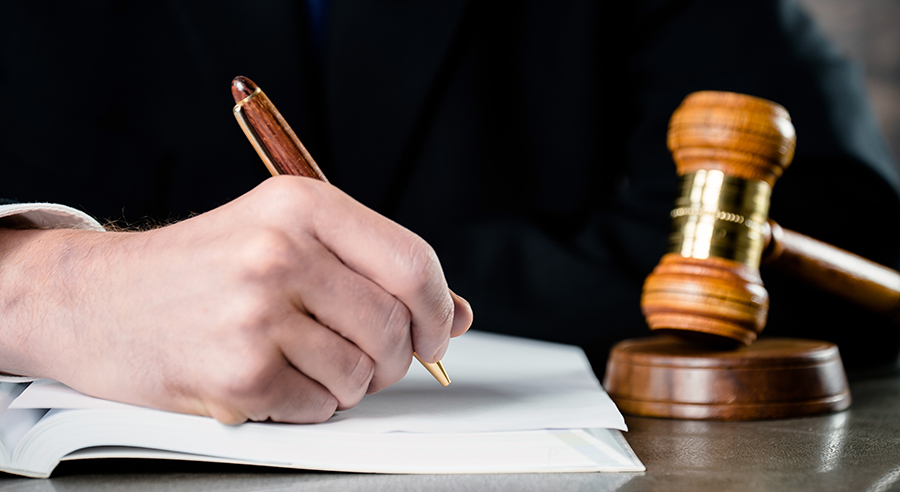
This section does not provide legal advice and it’s merely an opinion. Consulting with a lawyer on your particular situation prior to talking to the FAA is a good idea.
Each case is different, and the question of whether you should get a lawyer is not a clear-cut yes as it would be in a criminal investigation.
Getting a lawyer is always a good idea if you receive a Proposed Certificate Action. In less severe cases, giving the Air Traffic Controller or the FAA the cold shoulder during the first call or email may not be the best advice – especially if you are in the wrong.
That doesn’t mean you shouldn’t have a lawyer speak on your behalf, however.
The most significant risk of not using a lawyer is not confirming what the FAA already knows; it is incriminating yourself further or saying something that may be used out of context later.
A lawyer should not be used as a weapon for a battle but rather as a representative in an unfamiliar environment.
The FAA doesn’t want to go on a witch hunt to take your license; it wants to ensure that aviators follow the rules and that any mistakes they make don’t happen again.
If the advice on getting a lawyer sounds vague, that is intentional.
Here is a more concrete piece of advice:
If you cause a possible pilot deviation, and it is severe enough to progress past the initial phone call, contact a lawyer for advice, and hear what they have to say.
If you haven’t caused harm, proving to the FAA that you are sorry and have taken actions to ensure that the deviation (or similar incidents) won’t happen again is often enough to close the case.
Conclusion
As an aviator, it is up to you to ensure that you follow all regulations and safety protocols. The best way to avoid pilot deviations is by understanding what can cause them in the first place. Undergoing additional training or using a flight simulator will help ensure compliance with FAA rules and keep everyone safe.
If a deviation occurs, contacting a lawyer for advice may be beneficial if the situation escalates beyond an initial phone call from ATC or the FAA. Ultimately, being aware of your responsibilities when operating aircraft will go a long way toward avoiding any violations in the future.
Stay safe!
